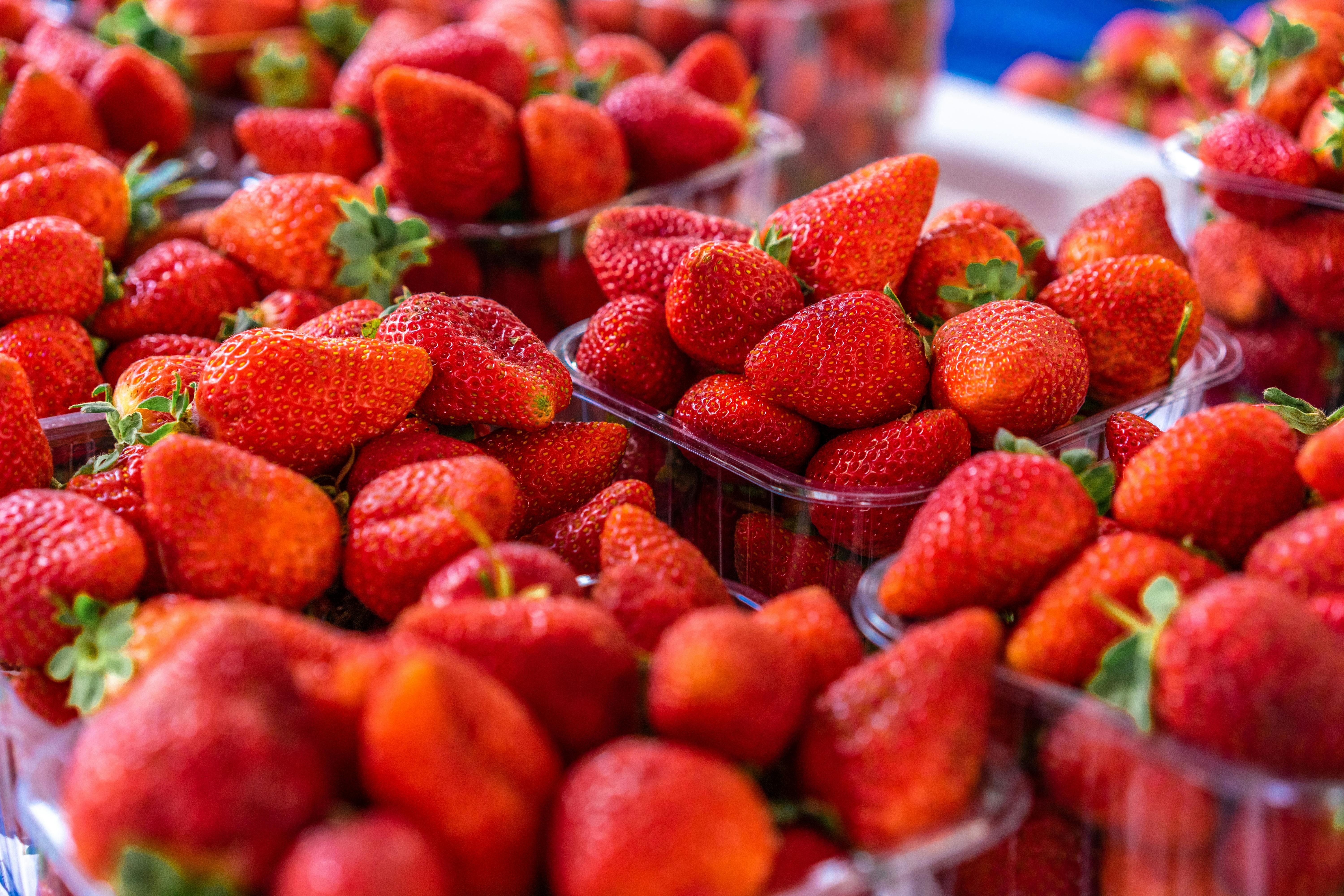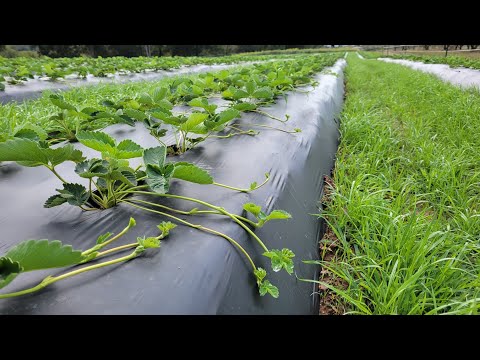Strawberry plants are a popular fruit choice for many gardeners and farmers. Many farmers and growers are interested in learning how many strawberry plants per acre they should plant to maximize their yield. In this article, we will discuss the factors to consider when determining how many strawberry plants per acre should be planted, as well as the recommended number of plants to yield optimal results.The exact number of strawberry plants that you need per acre depends on the variety of strawberry and the planting system used. Generally, when using a matted row system, you will need to plant roughly 2,500-8,000 plants per acre. When using a hill system, you may need up to 16,000 plants per acre.
Soil Quality
Soil quality is one of the most important factors that determine strawberry plant density. Soil that is too acidic, alkaline, or contains too much clay can inhibit the growth of strawberries. Good soil for strawberry cultivation should have a pH between 5.6 and 6.2, be well-draining, and have a good balance of nutrients. If the soil does not meet these criteria, then amendments such as lime or fertilizer may need to be added to improve its quality and allow for greater plant density.
Climate Conditions
The climate conditions of a region also play an important role in determining the density of strawberry plants. Temperatures that are too hot can cause the plants to suffer from heat stress, while temperatures that are too cold can cause them to become dormant and produce fewer fruits. Additionally, too much rain or not enough water can limit the growth of strawberries, so finding a balance between rainfall and irrigation is key for optimal plant density.
Variety Choice
The variety chosen for planting can also affect strawberry plant density. Some varieties grow better in certain climates than others and some require more attention than others. Choosing varieties that are well-suited to the local climate and require minimal maintenance will help ensure optimal plant density.
Plant Spacing
In addition to variety choice, proper plant spacing is essential for achieving high strawberry plant density. Plants should be spaced far enough apart so that they don’t compete for resources such as sunlight and water but close enough together so that they don’t become overcrowded. Following recommended planting guidelines will help ensure optimal plant spacing.
Maintenance Practices
Finally, proper maintenance practices are necessary for achieving high strawberry plant density. This includes regularly weeding out competing plants, pruning away dead or diseased foliage, applying fertilizer in moderation, and controlling pests with natural methods whenever possible. Following these practices will help maintain optimal strawberry plant density over time.
Recommended Plant Density for Strawberries
The recommended plant density for growing strawberries varies depending on the variety selected and the type of system used. Generally, it is suggested to plant strawberries at a density of 12-18 plants per square meter (or 4-6 plants per square foot). For a more intensive system, a higher density may be recommended, such as 18-24 plants per square meter (or 6-8 plants per square foot). When planting strawberries, it is important to consider how much space each plant needs and the size and shape of the planting area. For example, in smaller areas with limited space, it may be beneficial to use a higher density planting system.
When determining the best planting density for your strawberry crop, consider factors such as soil type and fertility; available sunlight; water availability; climate; and pest or disease pressure. Choosing an appropriate plant density will help ensure a successful harvest. It is also important to provide adequate spacing between rows and between individual plants to allow for adequate air circulation and access for maintenance activities such as pruning and weeding.
When planting strawberries, it is best to use certified disease-free plants from a reputable supplier. The use of certified seedlings helps reduce the risk of introducing pests or diseases into your garden. Additionally, always follow good crop hygiene practices when working with your strawberry crop to ensure its health and productivity over time.
Planting Strawberries in Rows
Growing strawberries in rows is a great way to maximize the space you have available for gardening. When planting strawberries, it is important to choose a sunny location that has well-drained soil. Strawberries thrive best in soil with a pH of 6.0-7.0 and will produce more fruit when given plenty of sunlight and adequate water. Before planting, it is important to prepare the soil by removing any weeds and incorporating organic matter such as compost or manure into the soil.
When planting strawberries in rows, make sure to space the plants about 12-18 inches apart and provide enough room between each row for easy access. To ensure proper pollination, it is important to plant multiple varieties of strawberries that bloom at different times throughout the season. Once planted, cover the bare soil around the plants with mulch or straw to help retain moisture and minimize weeds.
Strawberries require regular watering, especially during dry periods or when temperatures are high. Water deeply at least once a week during dry weather and adjust as needed depending on your climate and weather conditions. Fertilizing strawberry plants twice a year with an all-purpose fertilizer can also help ensure that they get adequate nutrition for producing sweet fruit.
Harvesting strawberries should begin once they have turned bright red in color and are beginning to soften slightly; this usually starts sometime in late spring or early summer depending on your climate zone. Gently twist the berry off of the plant when harvesting – do not pull them off as this can damage the plant’s roots. Strawberries should be eaten immediately after harvesting or stored in an airtight container for up to two days in the refrigerator before being consumed.
Spacing Requirements for Strawberry Plants
Strawberry plants should be spaced in the garden to provide enough room for them to grow to their full potential. Proper spacing is necessary to ensure the plants receive adequate sunlight, air circulation, and nutrients. The exact spacing will depend on the variety of strawberry plant, but generally, strawberry plants should be spaced 8-12 inches apart in rows that are 3-4 feet apart. Additionally, each plant should be planted 8-10 inches deep into the soil.
It is important not to overcrowd a strawberry patch, as this can cause disease and pest problems. To allow for proper air circulation, thin out any overcrowded areas of the patch as necessary. When thinning out a patch of strawberries, it is best practice to cut off or pinch off any runners that have grown beyond the recommended spacing requirements. This will help ensure that you have healthy, productive plants in your strawberry patch.
Spacing requirements may vary slightly depending on the variety of strawberry being grown and local climate conditions. It is best practice to research your specific variety and climate conditions before planting your strawberry patch in order to determine the optimal spacing for your particular situation. With proper care and maintenance, a well-spaced strawberry patch can produce delicious fruit for years to come!

Calculating the Number of Strawberry Plants Needed
Growing strawberries can be an enjoyable and rewarding experience. To get the most out of your strawberry patch, it’s important to know how many plants you need to purchase. Calculating the number of strawberry plants you need is a relatively simple process. Here are some tips on calculating the number of strawberry plants needed for a successful harvest.
The first step in determining how many strawberry plants you need is to determine how much space you have available for planting. If you are planting in rows, measure the length and width of your available space. Take into account any obstacles such as trees or bushes that may interfere with your planting plan. Once you have determined the area, multiply the length by the width to calculate the total square footage of your planting area.
The next step is to determine how many plants you can fit into this area. Generally, strawberry plants should be spaced about 12 inches apart in all directions. Divide your total square footage by 144 (12 x 12) to determine how many plants will fit in your space. This will give you an approximate number of how many plants you can fit in your area.
Finally, take into account how productive each plant will be and adjust accordingly. Some varieties produce more fruit than others so it’s important to factor this into your calculations when shopping for plants. Once you have taken these three steps, you should have a good idea as to how many strawberry plants are needed to maximize production from your patch.
Calculating Number of Rows Per Acre For Strawberry Planting
Strawberry planting is an important part of any agricultural enterprise. Knowing how many rows per acre to plant is an important step in the process. There are a few factors that should be taken into consideration when calculating the number of rows per acre for strawberry planting.
The first factor to consider is the size and shape of the field. If it is a rectangular field, then it should be divided into four equal parts, with one row planted in each section. If it is an irregularly shaped field, then the number of rows will vary depending on its size and shape.
The second factor to consider is the type of strawberry variety being planted. Some varieties require more space than others, so more rows may need to be planted per acre for those varieties. Additionally, some varieties are more productive than others, so fewer rows may need to be planted for those varieties in order to achieve maximum yield.
The third factor to consider is soil fertility. Soil fertility can affect the number of plants that can be grown in an acre as well as the amount of space needed between each row. If soil fertility is high, then more plants can be grown in an acre and less space may be needed between each row. Conversely, if soil fertility is low, then fewer plants can be grown in an acre and more space may need to be left between each row.
Finally, climate should also be taken into consideration when calculating the number of rows per acre for strawberry planting. Different climates have different temperature requirements for different varieties, so this must be taken into account when determining how many plants will fit in an acre and how much space will need to be left between each row.
By taking all these factors into consideration, farmers can calculate a rough estimate of how many rows per acre they should plant for their specific strawberry variety and climate conditions. This will help ensure maximum yield and profitability from their crop while minimizing waste due to overcrowding or lack of adequate space between each row.
Increase Plant Vigor
One of the most effective ways to increase the number of strawberries produced per acre is to ensure that the plants are as vigorous as possible. This can be done by selecting a variety that is well-suited for the local climate and soil, and then providing adequate nutrition, water, and sunlight. Additionally, good cultural practices such as regular pruning and mulching can help to keep the plants healthy and encourage vigorous growth.
Provide Proper Fertilization
Adequate fertilization is essential for optimal strawberry production. Applying an appropriate fertilizer at planting time can provide necessary nutrients for early season growth. During the growing season, additional fertilizer may be needed to replenish soil nutrients and promote plant vigor. It is also important to monitor soil pH levels to ensure proper nutrient uptake.
Control Weeds
Weeds can compete with strawberries for water, light, and nutrients, so controlling weeds is essential for maximizing yields. This can be done mechanically or chemically with an herbicide. Keeping weeds under control will help ensure that your plants have access to all the resources they need for healthy growth.
Reduce Stress
Stressful environmental conditions can cause a decrease in strawberry yields. To reduce stress on plants it is important to maintain proper soil moisture levels and avoid excessive exposure to heat or cold temperatures. Additionally, monitoring pests and diseases throughout the season is key for keeping plants in good health.
Time Plantings Appropriately
Timing your strawberry plantings appropriately can also make a big difference in yield potential. Planting earlier in the season can help increase yields by allowing more time for fruit production before hot summer temperatures arrive or cold winter weather sets in.
By following these steps you should be able to maximize your strawberry production potential and harvest more delicious fruits per acre!

Conclusion
The number of strawberry plants per acre can vary greatly depending on the variety and growing conditions. Generally, for a commercial operation, the range is between 3,000-5,000 plants per acre. For a home garden or hobby farm, the range is typically between 50-200 plants per acre.
A successful strawberry crop requires proper soil preparation, irrigation, fertilization, and pest management. All of these variables should be taken into consideration when deciding how many strawberry plants to plant per acre.
Ultimately, the number of strawberry plants per acre depends greatly on the type of strawberries being grown and the environment they are being grown in. By taking into account factors such as variety selection and climate conditions, growers can make an informed decision about how many strawberry plants to plant per acre.
Overall, it is important to remember that each situation is unique and requires careful consideration when determining how many strawberry plants will be needed to achieve desired results. With proper planning and research, growers can ensure that they have an abundant yield of healthy strawberries for years to come.



